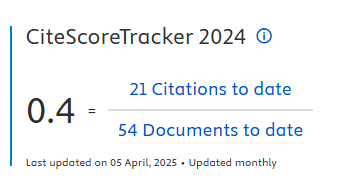Chinese technology: a study of the image and the desire for possession, using the technology readiness index – TRI scale
DOI:
https://doi.org/10.5585/iji.v10i4.21638Keywords:
Technology Readiness Index Scale (TRI), Chinese technology, Possession desire, Image.Abstract
Objective: This article intends to measure the readiness of Brazilian consumers to adopt products based on Chinese technology, using the Technology Readiness Index - TRI scale.
Originality/Relevance: The importance of the image of new technological products and services has resulted in debates and discussions in academic and executive circles. However, there are still gaps, where the need to identify and characterize the importance of image to encourage ownership of Chinese products can present innovative nuances in the knowledge of the subject.
Methodology/approach: A survey was carried out with 865 consumers of Chinese products in Brazil, evaluating the instrument used based on statistical procedures.
Main results: This study allowed evaluating the Technology Readiness Index (TRI) model and its applicability in the analysis of consumer readiness for Chinese products. The constructs and variables showed consistency, with six confirmed and three unconfirmed hypotheses. Innovativeness, Optimism, Insecurity and Insecurity are important emotional states to characterize Explorer, Pioneer, Skeptical, Paranoid and Laggard consumers.
Theoretical/methodological contributions: The study enabled the identification of consumer behavior in the use of products based on Chinese technology. The Technology Readiness Index (TRI) has proven to be an important model for measuring technology readiness in different contexts.
Social/Management Contributions: The validation of the model allows its use in corporations of different sizes and different types of products and services.
Downloads
References
Bagozzi, R., & Youjae Y. (1988). On the evaluation of structural equation models. Journal of The Academy of Marketing Science. Journal, 16(1), p. 74-94. https://doi.org/10.1007/BF02723327
Barbosa, L. & Campbell, C. (2006). O estudo do consumo nas ciências sociais contemporâneas. Consumo e Identidade. Rio de Janeiro: FGV. ISBN: 85-225-0570-5.
Barich, H. & Kotler, P. (1991) A framework for marketing image management. Sloan Management Review, Winter, p 97-104.
Bakirtaş, H. & Akkaş, C. (2020). Technology Readiness and Technology Acceptance of academic staffs. International Journal of Management Economics and Business, Vol. 16, No. 4. http://dx.doi.org/10.17130/ijmeb.853629
Bastianello, M. R., & Hutz, C. S. (2015). Do Otimismo explicativo ao disposicional: A perspectiva da psicologia positiva. Psico-USF, 20(2), 237-247. http://dx.doi.org/10.1590/1413-8271201520020
Berger W. N., Rossetto, C. R., & Sausen, J. O. (2015). Inovatividade Organizacional. Um Estudo Bibliométrico em Bases de Dados Internacionais. Desenvolvimento em Questão, 13(29). https://doi.org/10.21527/2237-6453.2015.29.6-32
Bessant, J. (2009). Inovação e empreendedorismo. Porto Alegre: Bookman. ISBN: 9788577804818.
Christo, N., & Demuner, J.A. (2017) Fatores de Motivação do Consumo por Status de Bens de Luxo por Jovens Brasileiros. In: Seminário em Administração. DOI: 10.22533/at.ed.75619130310.
Cunha, A.M. (2007). O boom Chinês e as economias latino-americanas. Indic. Econ. FEE, Porto Alegre, v. 35, n. 2.p. 97-112. https://www.researchgate.net/publication/277064108_O_boom_chines_e_as_economia_Latino-americanas
Dias, E. J. P., & Arruda Filho, E. (2012). Comportamento do consumidor no setor educacional: Adoção e aceitação de novas tecnologias. Revista Pretexto, 14(2), 77-95. https://doi.org/10.21714/pretexto.v14i2.1321
Dollar, D.; Jones, B. F. (2013). China: an institutional view of an unusual macroeconomy. National Bureau of Economic Research. Working paper. https://www.scholars.northwestern.edu/en/publications/china-an-institutional-view-of-an-unusual-macroeconomy
Duttha, S. & Lanvin, B. (2019). The Network Readiness Index 2019: Towards a Future-Ready Society. Portulans Institute. ISBN: 978-0-578-62273-6. Disponível em: https://networkreadinessindex.org/wp-content/uploads/2020/03/The-Network-Readiness-Index-2019-New-version-March-2020.pdf
Geromel, R. (2019). O Poder da China. Gente. ISBN: 978-85-452-0339-1.
Hair, J., Black, W., Babin, B., Anderson, R., & Tatham, R. (2010). Multivariate data analysis. Upper Saddle River, N.J: Pearson Prentice Hall. ISBN: 129202190X, 9781292021904.
Hair, Jr. (2009). Análise multivariada de dados. (6.ed.). Porto Alegre: Bookman. ISBN 978-85-7780-534-1.
Kaushik, M.K. & Agrawal, D. (2021), Influence of technology readiness in adoption of e-learning. International. Journal of Educational Management, Vol. 35 No. 2, pp. 483-495. https://doi.org/10.1108/IJEM-04-2020-0216
Keller, K. L. & Machado, M. (2006). Gestão estratégica de marcas. São Paulo: Pearson Prentice Hall. ISBN: 978-8581439532.
Lai, P. C. (2017). The literature review of technology adoption models and theories for the novelty technology. Journal of Information Systems and Technology Management. Vol. 14, No. 1, Jan/Apr., 2017 p. 21-38. https://doi.org/10.4301/s1807-17752017000100002
Lai, Y. L. & Lee, J. (2020). Integration of Technology Readiness Index (TRI) Into the Technology Acceptance Model (TAM) for Explaining Behavior in Adoption of BIM. Asian Education Studies; Vol. 5, No. 2. https://doi:10.20849/aes.v5i2
Lara, José. E., Locatelli, R. L., Santos Filho, J. O. & Bahia, E. T. (2017). Do encanto à vingança: o processamento e o comportamento do consumidor sobre informações de atributos de produtos tecnológicos. Perspectivas em Ciências da Informação. Vol. 22. No. 04 Oct-Dec p.p.157-176. https://doi.org/10.1590/1981-5344/3209
Leong, M. Y., Kwan, J. H. & Ming, L. M. (2021). Technology Readiness and UTAUT2 in e-wallet adoption in a developing country. F1000Research 2021. https://doi.org/10.12688/f1000research.72853.1
Lima, E., Hopkins, T., Gurney, E., Shortall, O., Lovatt, F., Davies, P. & Kaler, J. (2018). Drivers for precision livestock technology adoption: A study of factors associated with adoption of electronic identification technology by commercial sheep farmers in England and Wales. PloS one, 13(1). https://doi.org/10.1371/journal.pone.0190489
Matarirano, O., Yeboah, A. & Gqokonqana, O. (2021). Readiness of Students for Multi-Modal Emergency Remote Teaching at A Selected South African Higher Education Institution. International. Journal of Higher Education Vol. 10, No. 6; doi:10.5430/ijhe.v10n6p135
Parasuraman, A. (2000). Technology Readiness Index (TRI) a multiple-item scale to measure readiness to embrace new technologies. Journal of service research, 2(4), 307-320. http://dx.doi.org/10.1177/109467050024001
Parasuraman, A., & Colby, C. (2001). Techno-ready marketing: how and why your customers adopt technology. New York: The Free Press. ISBN-13:978-0684864945.
Penz, D., Amorim, B. C., do Nascimento, S., & Rossetto, C. R. (2017). The Influence of Technology Readiness Index in Entrepreneurial Orientation: A Study with Brazilian Entrepreneurs in the United States of America. International Journal of Innovation, vol. 5, no. 1, 2017. Disponível em: https://www.redalyc.org/jatsRepo/4991/499151081005/499151081005.pdf
Pigola, A., Costa, P. R., Mazzieri, M. R., & Scafuto, I. C. (2021, May/Aug.). Why to research about innovation is challenge? International Journal of Innovation - IJI, São Paulo, 9(2), 215-218. https://doi.org/10.5585/iji.v9i2.20549
Rogers, E. (1962). Diffusion of innovation. Free press. New York. https://doi.org/10.1002/jps.2600520633
Shim, H.S., Han, S.L. & Ha, J. The Effects of Consumer Readiness on the Adoption of Self-Service Technology: Moderating Effects of Consumer Traits and Situational Factors. Sustainability 2021, 13, 95. https://dx.doi.org/10.3390/su13010095
Souza, R. V. D., & Luce, F. B. (2005). Avaliação da aplicabilidade do Technology Readiness Index (tri) para a adoção de produtos e serviços baseados em tecnologia. Revista de Administração Contemporânea, 9(3), 121-141. https://doi.org/10.1590/S1415-65552005000300007
Solomon, M. R. (2011). O comportamento do consumidor: comprando, possuindo e sendo. 9. ed. Porto Alegre: Bookman. ISBN: 9788577807727.
Yang, C., Lee, C. & Lin, C. A. (2012) Why does regional innovative capability vary so substantially in China? The role of regional innovation systems. Asian Journal of Technology Innovation, p. 239-255. https://doi.org/10.1080/19761597.2012.741393
Downloads
Published
How to Cite
Issue
Section
License
Copyright (c) 2022 Jose Edson Lara, Amynthas Cristiano Novaes, Bruno Pelizzaro Dias Afonso, Thalles Augusto Tissot-Lara

This work is licensed under a Creative Commons Attribution-NonCommercial-ShareAlike 4.0 International License.
- Abstract 689
- PDF 565











